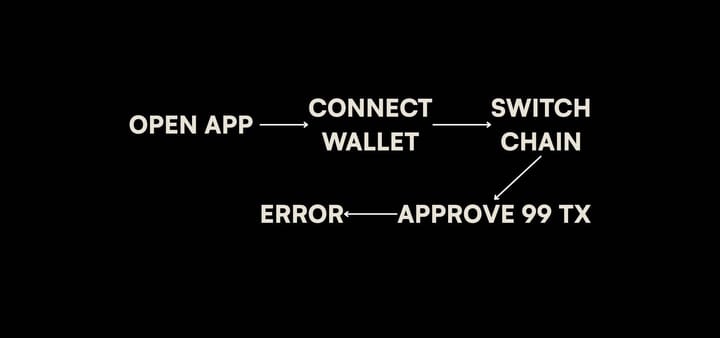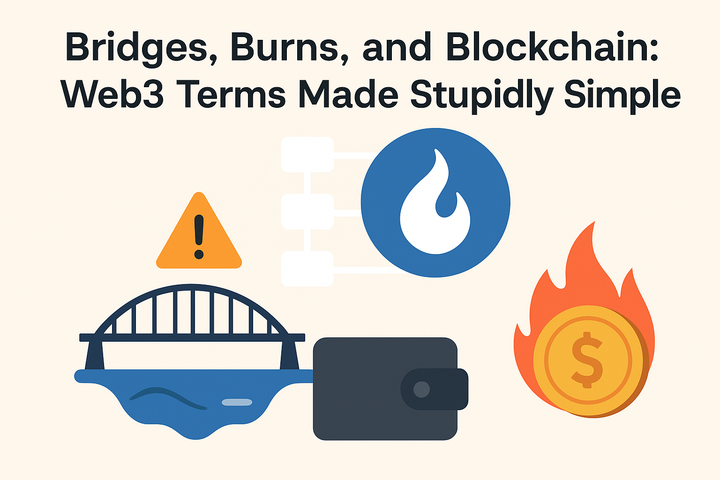How Not to Get Scammed in Web3: A Survival Guide for Humans

Web3 promises freedom, ownership, and opportunity. But along with all that good stuff comes something darker scams, hacks, and bad actors looking to take your hard-earned crypto.
If you’ve spent any time in the world of NFTs, DeFi, or crypto trading, you’ve probably seen it:
- Random messages offering “airdrops” that turn out to be wallet-draining traps.
- Fake versions of popular sites designed to steal your login details.
- Flashy promises of guaranteed profits (spoiler: there’s no such thing).
This guide is here to help you spot the traps before you fall into them. No jargon. No fear-mongering. Just simple, practical tips and real examples so you can enjoy Web3 without becoming someone’s exit liquidity.
Why Scams Happen So Easily in Web3
Before we dive into prevention, let’s understand why Web3 is such a playground for scammers.
1. It’s Easy to Move Money
In traditional banking, moving large sums takes time, ID checks, and approvals. In Web3, you can transfer millions of dollars in seconds and scammers love that speed.
2. Transactions Are Irreversible
If someone steals your crypto, there’s no “call customer service” option to reverse it. Blockchain transactions are final. That’s great for decentralization, but brutal for victims.
3. Anonymity Works Both Ways
You don’t have to give your real name to make a crypto wallet. That protects your privacy, but it also means scammers can hide easily.
4. New Tech = Low Awareness
Most people are still learning how wallets, smart contracts, and NFTs work. Scammers take advantage of that confusion.
Example:
In 2021, a fake airdrop link for the “Squid Game” token tricked thousands of people. The token value skyrocketed, then the team vanished, cashing out millions, a “rug pull” in plain sight.
The Main Types of Web3 Scams
Knowing what you’re up against is half the battle. Here are the most common traps.
1. Phishing Websites
Fake sites that look exactly like real ones. They trick you into entering your seed phrase or signing a transaction.
How It Works:
You search for “Uniswap” on Google, click the top ad, and it’s a perfect clone. You connect your wallet, and in seconds, your assets are gone.
How to Avoid:
- Bookmark official sites.
- Double-check URLs.
- Don’t click random ads or links from strangers.
2. Fake Airdrops
Scammers send you tokens you didn’t ask for. When you try to interact with them, they make you sign a malicious contract.
How to Avoid:
- Don’t interact with random tokens in your wallet.
- Use sites like Etherscan’s token ignore list to hide suspicious assets.
3. Rug Pulls
A project hypes up its token or NFT, collects investor money, then disappears.
Example:
A DeFi farm promises 1,000% APY. People deposit millions. A week later, the devs drain the liquidity pool.
How to Avoid:
- Check if the project’s smart contract is audited.
- Research the team (real names, past work).
- Be wary of unrealistic returns.
4. Impersonation Scams
Scammers pretend to be trusted figures, like admins or influencers.
Example:
A fake “OpenSea Support” DM tells you to “verify your wallet” by clicking a link.
How to Avoid:
- Legit teams never DM you first.
- Always use official support channels.
5. Pump and Dumps
Groups artificially inflate a token’s price, then sell at the top, leaving others with worthless coins.
How to Avoid:
- Avoid chasing sudden price spikes.
- Check token liquidity and holder distribution.
6. Malicious Smart Contracts
Some contracts have hidden functions that let scammers drain your wallet when you interact.
How to Avoid:
- Only sign transactions you understand.
- Use wallets like Rabby that show plain-English previews.
Your Web3 Survival Toolkit
Here’s how to protect yourself without feeling paranoid.
1. Use a Hardware Wallet
A hardware wallet (like Ledger or Trezor) keeps your private keys offline. Even if your computer gets hacked, your funds are safe unless you physically confirm a transaction.
2. Separate Hot and Cold Wallets
- Hot wallet: For daily transactions. Keep small amounts.
- Cold wallet: For long-term storage. Rarely connected.
3. Never Share Your Seed Phrase
It’s like the master key to your funds. No one legitimate will ever ask for it.
Pro Tip: Write it on paper, store in a safe. Don’t keep it in your phone or cloud storage.
4. Double-Check Before Signing
If you don’t know what a transaction does, don’t sign it. This one rule alone can save you from most hacks.
5. Verify Links
Always get links from official sources, not from DMs, Discord, or Twitter replies.
6. Stay Updated
Follow trustworthy Web3 security accounts or newsletters so you know about new scams before they hit you.
7. Test with Small Amounts
If you’re moving funds to a new address or chain, send a tiny amount first to confirm it works.
Real Stories, Real Lessons
Let’s learn from others’ mistakes.
Story 1: The Discord Takeover
A popular NFT project’s Discord was hacked. The hacker posted a fake “mint link” for a limited NFT drop. Hundreds clicked instantly, connecting wallets and losing everything.
Lesson: Never rush because of “limited time” offers. Slow down.
Story 2: The Too-Good-To-Be-True Yield Farm
An investor saw a farm offering 3,000% returns. They put in $5,000. A week later, the site went offline.
Lesson: High returns = high risk. If it sounds impossible, it probably is.
Story 3: The Fake App
Someone downloaded “MetaMask” from an unofficial app store link. It was a fake app that stole their seed phrase during setup.
Lesson: Always download from the official site or verified app stores.
The Scam-Resistant Mindset
Technology helps, but your mindset is your strongest defense.
- Skepticism is healthy — Question everything.
- FOMO is dangerous — Scammers love urgency.
- Education is ongoing — Web3 evolves fast; so do scams.
Quick Red Flags Checklist
- Promises of guaranteed profits
- Urgent “act now” language
- Requests for seed phrases or private keys
- Links from strangers
- Offers that sound way better than the market average
What to Do If You Get Scammed
Sadly, no system is 100% foolproof. If it happens:
- Revoke approvals using sites like revoke.cash.
- Move remaining funds to a secure wallet immediately.
- Warn others in the community.
- Report to platforms like Etherscan, OpenSea, or relevant authorities.
While you might not get your funds back, you can help prevent others from falling into the same trap.
Conclusion
Web3 is exciting, but it’s still the Wild West in many ways. Scams aren’t going away anytime soon but you can navigate safely if you stay alert, move slowly, and use the right tools.
The most important takeaway:
If something feels off, step back. In Web3, doing nothing is often safer than acting in haste.
If you follow the principles in this guide, you won’t just survive in Web3, you’ll thrive, with your assets and peace of mind intact.



Comments ()